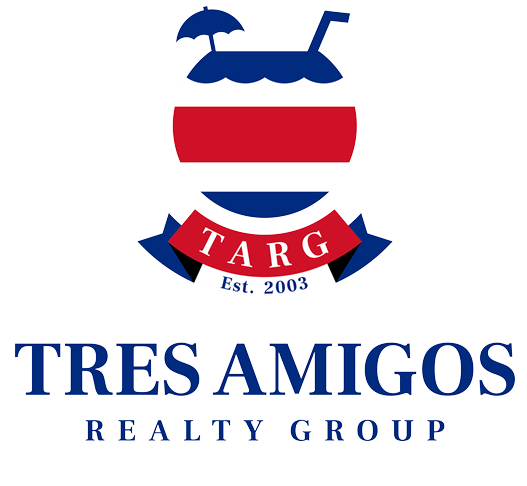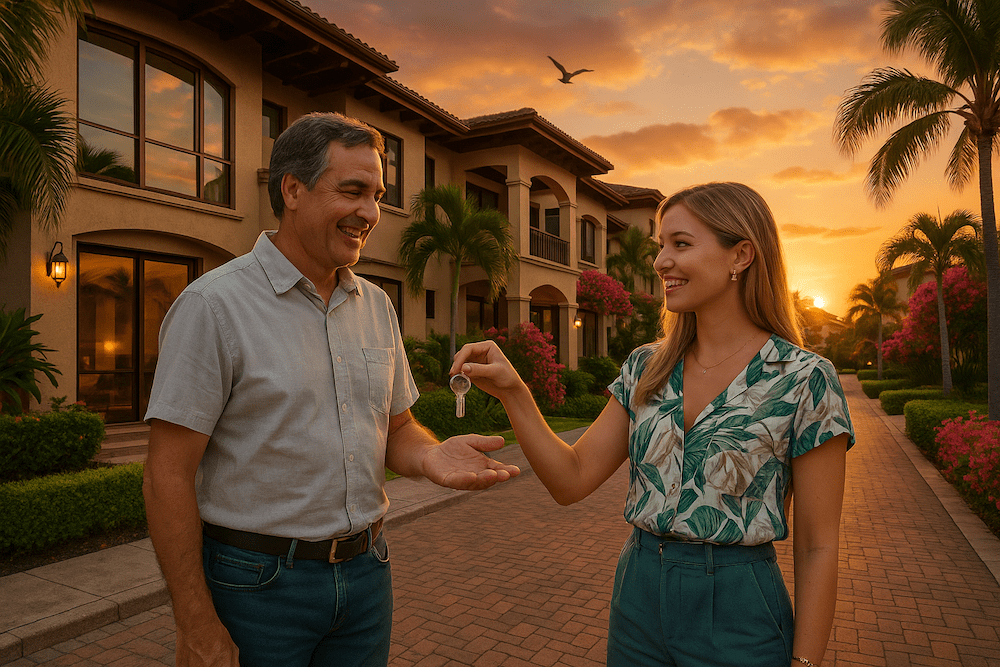What Are Typical HOA Fees for Condominium Communities in Costa Rica
Introduction
Many expat property investors who are not familar with Homeowners’ Associations ask the following question: “What are HOA fees, and what do they actually cover?” In Costa Rica, a Homeowners’ Association (HOA) does more than manicure hedges. It funds core services—security, road upkeep, water and septic systems, pool maintenance—that municipalities may not consistently provide. All condominium communities charge these fees and they are a positive, not a negative. These fees help keep your property pristine and enhance resale value. Still, understanding these costs upfront helps you compare communities on more than just price per square meter; it lets you weigh the lifestyle you want against the budget you’re comfortable with.
In Guanacaste’s Papagayo corridor—Playas del Coco, Playa Hermosa, Playa Panama, and Playa Ocotal—fees vary widely based on amenities, staffing, and the complexity of infrastructure. The aim of this guide is to demystify how fees are set, what’s typical in this region, and how to evaluate them with confidence before you write an offer.
Why HOA Fees Matter for Buyers
HOA fees directly impact both your monthly cash flow and your day-to-day experience. A lower fee might look attractive on paper, but if it means inconsistent gate coverage, aging roads, or a pool constantly “under maintenance,” the savings can feel like a false economy. Conversely, a higher fee could deliver tangible value: reliable 24/7 security, pristine common areas, a responsive on-site administrator, and reserves that prevent unpleasant special assessments.
Think of HOA fees as an alternative to doing things yourself in a tropical, coastal environment where heat, salt air, and seasonal rains accelerate wear and tear. The question to ask isn’t just “How much?”—it’s “What level of service and community experience do I expect, and does this fee realistically support it?”
How HOA Fees Are Determined
Costa Rica’s Condominium Law (Ley 7933)
Costa Rica’s Ley 7933 (in Spanish) provides the legal framework for how condominium regimes are formed, managed, and funded. It defines common property, requires bylaws, and establishes how owners must contribute to shared expenses. For you as a buyer, the key takeaway is predictability: the budget, accounting, voting rights, penalty provisions for late payments, and calculation method are spelled out in the recorded bylaws and rules. Boards can’t simply invent new fee formulas; any change must follow the governance process laid out in those documents.
Condos vs. Townhomes vs. Detached Homes
Fees vary by product type because each comes with different shared obligations. Mid-rise condos might include elevators, lobbies, and larger pools; townhomes may share walls and a smaller amenity set; detached homes in gated communities often rely on the HOA for security, roads, common landscaping, and sometimes private water systems. The number of units paying into the pot also matters—more doors can spread fixed costs, while boutique communities have fewer owners to share the burden.
How Fees Are Calculated
Most bylaws adopt one of the following approaches (or a combination):
- By percentage of ownership (coeficiente): Typically tied to constructed area; larger residences pay a higher proportion.
- By land area: Common in horizontal (lot-based) regimes where lot size dictates the share of expenses.
- Equal distribution: Each unit pays the same amount, used when units are fairly similar in size and impact.
No method is universally “best.” The right question is whether the formula fairly reflects consumption of services and the maintenance load your unit places on the community. Always ask for the bylaws, current budget, and the official table showing each unit’s share.
Typical HOA Fee Ranges in Costa Rica
Entry-Level Communities ($50–$150/month)
Smaller, simpler properties—often older buildings or compact clusters—fall in this range. Expect basic common-area landscaping, limited gate coverage (e.g., night guard only), and minimal amenities. Roads may be public rather than private. If you’re highly self-sufficient and don’t need a gym, lap pool, or staffed clubhouse, this can be a sensible entry point, but keep in mind that you won't often find many expats in these smaller communities. There are other issues too such as rentability. It can also be difficult to sell such properties in a pinch.
Mid-Range Gated Communities ($200–$600/month)
This is the sweet spot for many Papagayo buyers. Communities in Playas del Coco, Playa Hermosa, Playa Panama, and Playa Ocotal commonly charge within this band, funding 24/7 controlled access, professional administration, well-maintained pools, and consistent landscaping. The variance within this range usually reflects staffing levels (one gatehouse vs. multiple), the complexity of water and septic systems, and the size/number of shared amenities.
Upscale and Luxury Developments ($700+/month)
On the Papagayo Peninsula and in premium, amenity-forward communities, fees rise to support beach clubs, multiple pools, high-end gyms, shuttle services, tennis or pickleball courts, and extensive landscape programs. Larger security teams, concierge-style staffing, and strict preventive maintenance schedules are typical. If you want resort-caliber living, expect resort-caliber operating budgets.
How Amenities Push Fees Higher
Every feature adds an expense line. Pools mean pumps, chemicals, and frequent resurfacing in a tropical climate. Beach clubs require staffing, utilities, and insurance. Private roads need periodic resurfacing, and slopes demand drainage maintenance after heavy rains. Water systems (ASADA agreements or private wells), wastewater treatment plants, and backup generators all increase the base cost to keep the community running smoothly.
Special Note on Mixed Communities (Homes + Condos)
Many Papagayo developments combine condominiums with detached homes behind one set of gates. In these horizontal regimes, owners share certain costs (security, roads, common landscaping) while vertical condo buildings carry additional internal costs (elevators, lobbies, building-specific maintenance). The bylaws usually separate “master” expenses from “sub-condominium” expenses so each group pays fairly for what they use.
Misunderstandings commonly arise when buyers assume lot size alone dictates dues. In practice, a smaller condo could pay more than a larger home if the condo’s building systems are expensive to operate. What matters is the budget architecture—how the master association and any sub-associations divide obligations.
The Papagayo Example
Across Playas del Coco, Playa Hermosa, Playa Panama, and Playa Ocotal, you’ll find a spectrum of fee structures. A modest condo cluster in Coco might land around $150–$250 per month for core services. In well-known communities such as Pacifico (Playas del Coco), Coco Bay Estates, or Hermosa Heights (Playa Hermosa), mid-range fees often support 24/7 gatehouses, multiple pools, fitness spaces, walking paths, and active maintenance programs. On the Peninsula Papagayo itself, or in communities with private beach club privileges, fees typically rise to fund hospitality-level service and more complex infrastructure.
Even within the same region, you’ll see variation due to topography (hillside drainage costs more to maintain), the age of the infrastructure, and how many owners share the budget. A community with 40 owners and two pools will naturally cost more per owner than a similar community with 120 owners sharing the same amenities.
What HOA Fees Typically Cover
Security and Controlled Access
Gated entry, roving patrols, camera systems, and 24/7 security staffing are common in the Papagayo area. Payroll is often the single largest line item—quality teams reduce incident risk and protect property values.
Landscaping and Common Area Maintenance
Tropical growth (especially during the rainy season) is relentless. Regular pruning, irrigation, storm cleanup, and pest control keep the environment lush but controlled. Shared walls, sidewalks, and lighting also fall under this umbrella.
Utilities and Infrastructure
Private roads, drainage, retaining structures, and in some cases water systems (or ASADA service agreements) and wastewater treatment plants are funded by dues. Backup generators for gates and essential systems are common and require servicing.
Clubhouses, Gyms, Pools, and Beach Clubs
Beyond cleaning and chemicals, amenities consume electricity, require equipment replacement, and need periodic resurfacing or refurbishment to stay safe and attractive in a salty, sunny climate.
Reserves and Long-Term Repairs
Healthy associations fund reserves to handle roof replacements, roadway resurfacing, pump overhauls, and major paint cycles without sudden special assessments. Strong reserves are a sign of good governance and proactive planning.
What Buyers Should Watch For
“Estimated” vs. Actual Fees in Pre-Construction
Sales teams for new construction projects often publish "estimated HOA fees" before the community is fully staffed and operational. Real-world costs can be 20–30% higher once occupancy scales and warranties expire. Ask for pro forma budgets and comparisons to similar, mature communities in Papagayo to avoid surprises.
Fee Increases in the First 1–2 Years
It’s common for dues to rise after turnover if the developer temporarily subsidized expenses or underfunded reserves. This isn’t necessarily a red flag—it’s a normalization phase. What you want to see is a transparent budget and a plan to reach sustainable funding levels without lurching from crisis to crisis.
Review Bylaws, Budgets, and Meeting Minutes
Request the governing documents, the latest operating budget with year-to-date actuals, the reserve study (if available), and recent assembly minutes. Look for clarity on calculation methods, delinquency policies, vendor contracts, and any pending capital projects. If the community uses a master association plus sub-associations, make sure you see both sets of numbers.
Unit Count and Cost-Sharing Math
Ask how many owners share fixed costs, whether there are developer-held units (which may delay full funding), and how amenity load scales with occupancy. The same amenity package will cost more per door in a 40-unit project than in a 120-unit project.
Hidden or External Costs
Confirm what’s not included in dues: in-unit water and electricity, cable/internet, personal landscaping for detached homes, and property management for vacation rentals are typically separate. If the community relies on an ASADA (local water association), clarify which charges are billed directly to owners versus paid by the HOA.
Conclusion
In the Papagayo region, HOA fees are best understood as a service bundle that safeguards your investment and elevates your day-to-day experience. Lower dues aren’t automatically better, and higher dues aren’t automatically wasteful—the right number is the one that realistically funds the level of security, maintenance, and amenities you expect. With a clear grasp of how fees are calculated, what they include, and how to read a budget, you can choose a community in Playas del Coco, Playa Hermosa, Playa Panama, or Playa Ocotal that fits your lifestyle with confidence and peace of mind. Contact us for a candid, no obligation review of the major developments in the ever popular Papagayo region.







